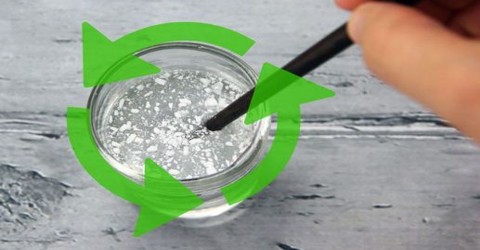Task: To make suspension.
Required accessories: l glass of glass, spoon, mud of soil and water.
Procedure: Take a glass and fill two-third portion of it with water. Add a one spoon full mud of soil to the water of the glass and stir gently. Leave the mixture for some while.
Analysis
What do you see? At first the entire mixture seems to be muddy. After keeping it for some time, the comparatively heavy particles of the soil are accumulating at the bottom of the glass, although some particle, of the soil which are light and minute are still in floating condition as the water and the mixture appears to be less muddy. Leave the mixture undisturbed for some more time. Do you see any change in the mixture? Yes, some more small particles of the soil have gathering at the bottom but the water is does not look completely transparent or dear. Still then some small particle remain in floating condition in the water.
This type of mixture of soil and water from which the components are partially separated is called as suspension. Similarly the mixtures obtained by adding fine chalk powder or flour with water and stirring gently are also suspensions. The antibiotic or antacid suspensions which we use also becomes partially separated when kept al rag and loons sediment at the bottom of the bottle. That is why those bottles are to be shaken well before use.
Now, can you find the differences among solutions, suspensions and heterogeneous mixtures? The components of heterogeneous mixtures can be identified and separated easily. In case of suspensions although the components can be identified but cannot be separated easily and in case of solutions, the components can not be identified and cannot be separated easily.














